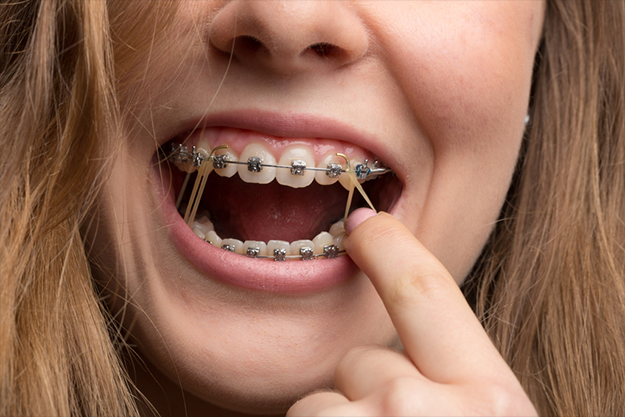Braces can assist in a range of conditions that have an impact on your jaw and teeth. They use force applied by an archwire to help move your jaw and teeth into a new position. If you have braces at some point, there’s a possibility that you’ll need to wear elastics. They apply extra force to particular areas. We’ll explain below the importance of elastics and how to use them.
What are Orthodontics Elastics?
Orthodontic elastics are used to apply more pressure in a particular direction. This is to assist in moving individual teeth or improving your bite. People with braces can use orthodontics elastics. Some people prefer wearing their elastics at night, and most people wear their elastics almost throughout. If the elastics are arranged in a difficult way to eat, you may remove and place new ones after.
The Importance of Elastics
Elastics are sometimes called rubber bands. They can get placed in different patterns, and it links to the brackets on your braces. They are secured and attached through the use of a tiny metal hook on the bracket. Elastics are essential for braces as they assist in adjusting various kinds of a misaligned jaw. This includes crossbite, open bite, underbite, and overbite. Elastics are used alongside braces to adjust the positioning of the teeth or the space in between the teeth. It helps in straightening, for instance, teeth that are leaning backward.
Some people may need elastics, while others may not. It all depends on the jawline. Depending on your situation, you can wear your elastics for several months or even for a year. It can be a bit difficult to wear your elastics, especially when eating. However, wearing your elastics all the time will help in ensuring fast progress. You can remove the elastics when eating and put on new elastics afterwards.
The Different Kinds of Elastics
There are various types of elastics and here is a list of some of them:
Inter-arch Elastics: These types of elastics help in changing your bite. The elastics are positioned in between the bottom and the top of the teeth in various patterns. Inter-arch elastics are divided into three classes. The first one is moving the upper teeth forward and retracting lower teeth by correcting the underbite. The second one is adjusting the lower teeth by retracting the upper teeth and moving them forward. The last one is closing the gap between the teeth by connecting teeth in the same raw.
Ligatures: Orthodontists use ligatures to put the archwires in place by placing the elastics on brackets.
How Elastics Are Used
Putting on your elastics will help in achieving the best results. We will guide you in putting your elastics on and ensure you feel comfortable with them. Sometimes one may be tempted to fasten the process by doubling up the elastics. However, this can create more damage than good and probably will end up causing damage to the roots. Even if the bands are too tight, it’s essential not to overstretch them as overstretching may make the bands lose their efficiency.
We offer plenty of bands that will last until you go for the next appointment. However, bands can get misplaced or snap. It’s essential to get used to carrying around elastics in case of snapping. You can always wear new ones. With time, the elastics may end up losing their elasticity, decreasing the force that applies to your teeth. Due to this reason, the elastics are changed frequently.


